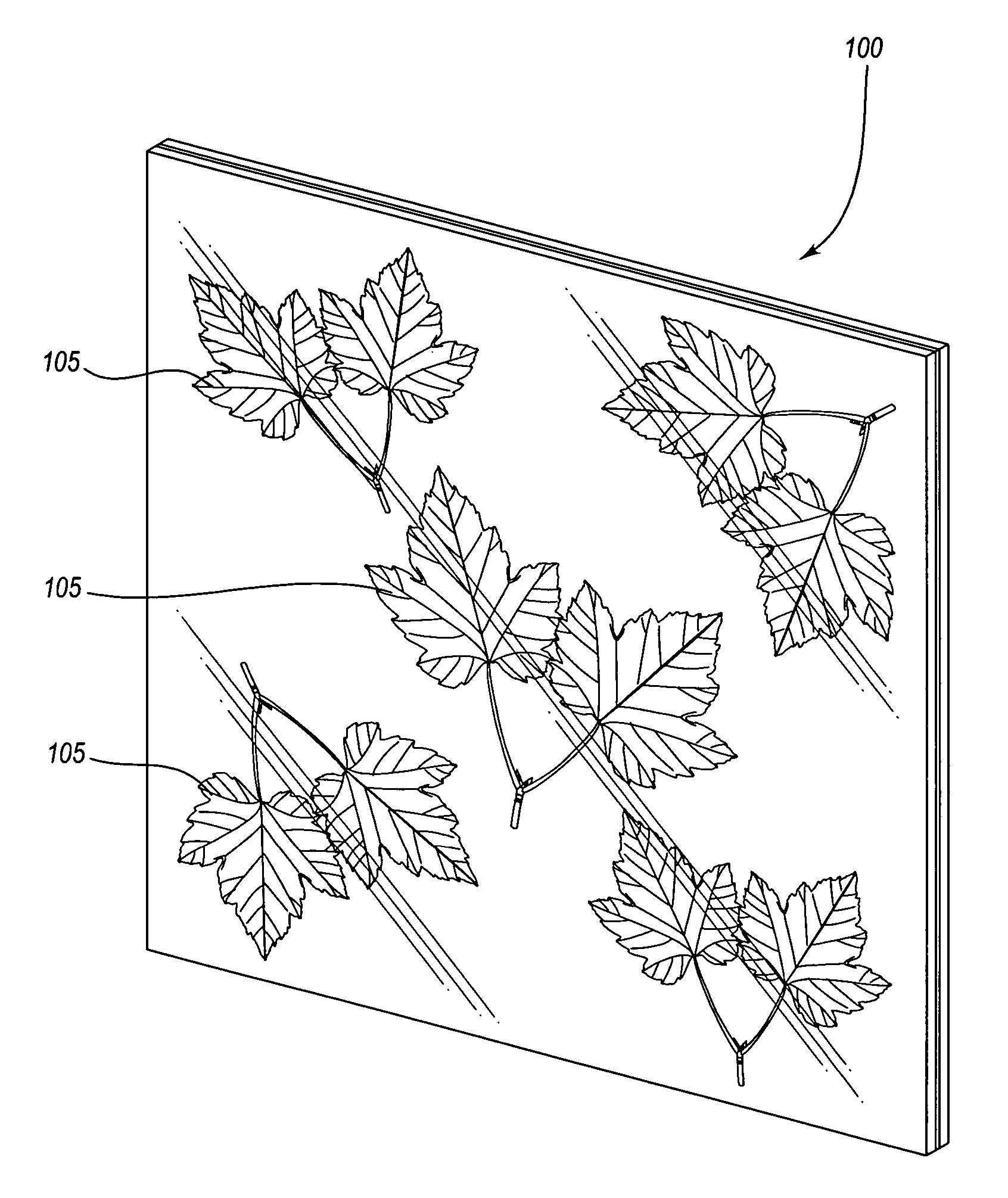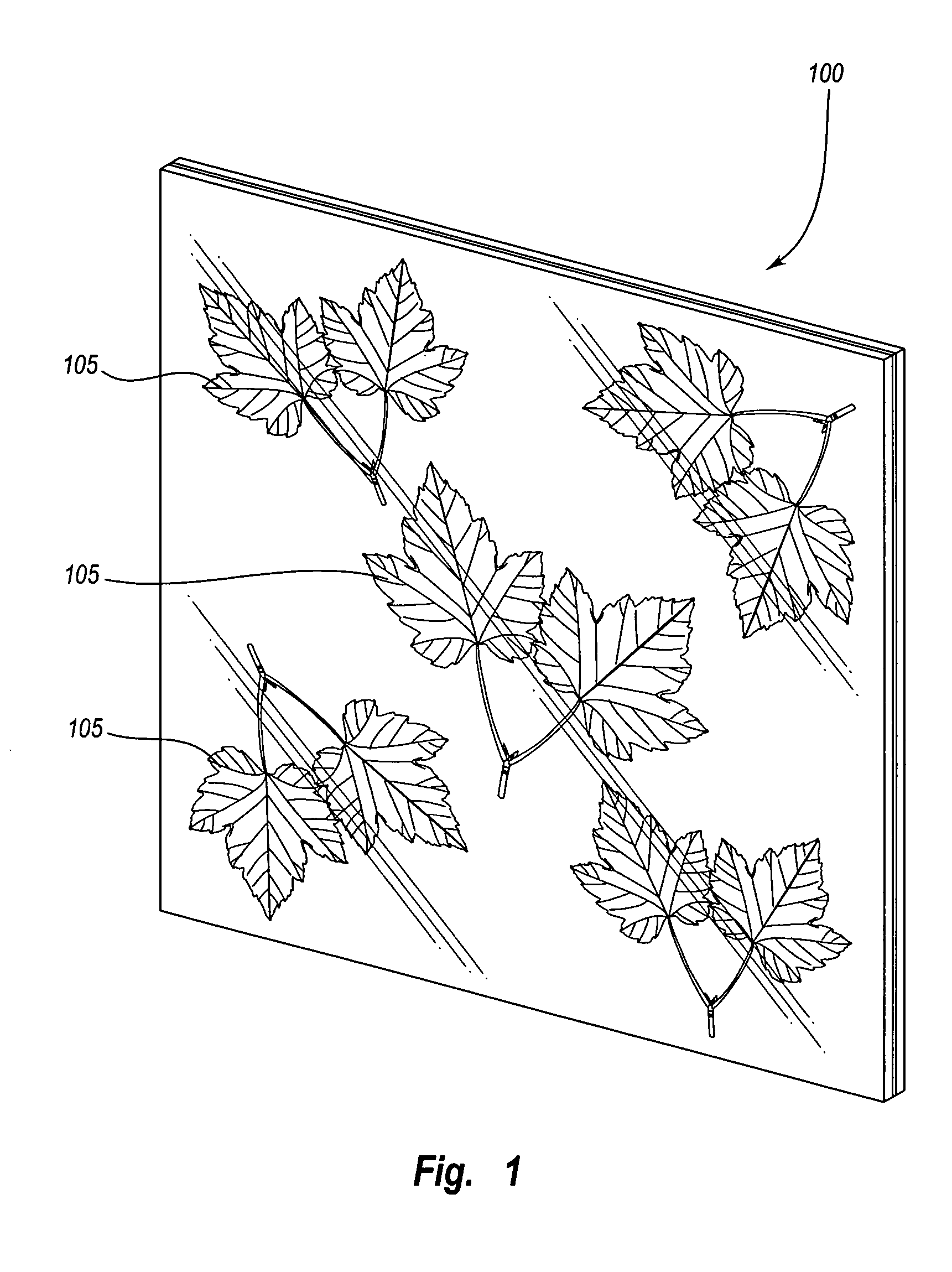Architectural glass panels with embedded objects and methods for making the same
a technology of decorative glass and embedded objects, applied in the field of decorative glass and resin products and processes, can solve the problems of decorative glass not being able to be heated and pressed using conventional thermosetting processes to include decorative objects or patterns, decorative glass tends to crack or blemish at many of the conventional temperatures, and the method of pouring liquid resin in a vertical direction is fairly limited
- Summary
- Abstract
- Description
- Claims
- Application Information
AI Technical Summary
Benefits of technology
Problems solved by technology
Method used
Image
Examples
Embodiment Construction
[0028] The present invention extends to methods and apparatus for creating decorative architectural glass panels that include any type of decorative objects embedded inside. In particular, implementations of the present invention include positioning two or more glass sheets together about one or more decorative objects, and then inserting a curable resin using a substantially horizontal pour.
[0029] For example, FIG. 1 illustrates a decorative architectural glass panel 100 that can be made using the methods and / or apparatus described herein. In particular, a glass panel 100 comprises one or more decorative objects 105 that can be seen through the transparent or translucent glass sheets from virtually any view. For example, the decorative objects 105 can comprise any organic, inorganic, naturally occurring, or synthetic materials such as rocks, crushed glass, minerals, leaves (e.g., objects 105, FIG. 1), twigs, branches, grasses, bamboo shoots, willow, thatch reed, solidified resins,...
PUM
 Login to View More
Login to View More Abstract
Description
Claims
Application Information
 Login to View More
Login to View More - R&D
- Intellectual Property
- Life Sciences
- Materials
- Tech Scout
- Unparalleled Data Quality
- Higher Quality Content
- 60% Fewer Hallucinations
Browse by: Latest US Patents, China's latest patents, Technical Efficacy Thesaurus, Application Domain, Technology Topic, Popular Technical Reports.
© 2025 PatSnap. All rights reserved.Legal|Privacy policy|Modern Slavery Act Transparency Statement|Sitemap|About US| Contact US: help@patsnap.com



